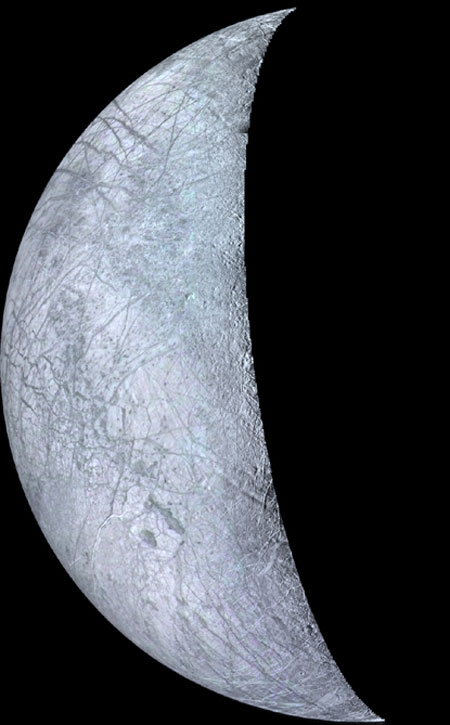Astronomy Picture of the Day
Discover the cosmos! Each day a different image or photograph of our fascinating universe is featured, along with a brief explanation written by a professional astronomer.

Credit: Voyager 2, NASA |
Explanation: Although the phase of this moon might appear familiar, the moon itself might not. In fact, this crescent shows part of Jupiter's moon Europa. The passing robot spacecraft Voyager 2 captured this image in 1979. Visible are plains of bright ice, cracks that run to the horizon, and dark patches that likely contain both ice and dirt. Raised terrain is particularly apparent near the terminator, where it casts shadows. Europa is nearly the same size as Earth's Moon, but much more smooth, showing few highlands or large impact craters. Evidence and images from the Galileo spacecraft, currently orbiting Jupiter, indicate that liquid oceans might exist below the icy surface. To test speculation that these seas hold life, NASA has started preliminary development of the Europa Orbiter, a spacecraft that would use radar to help determine the thickness of the surface ice. If the surface ice is thin enough, a future mission might drop hydrobots to burrow into the oceans and search for life. |
< | Archive | Index | Search | Calendar | Glossary | Education | About APOD | >
Authors & editors:
Robert Nemiroff
(MTU) &
Jerry Bonnell (USRA)
NASA Technical Rep.:
Jay Norris.
Specific rights apply.
A service of:
LHEA at
NASA/
GSFC
&
Michigan Tech. U.